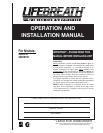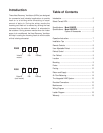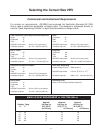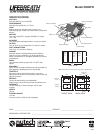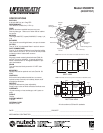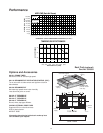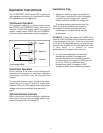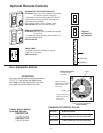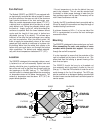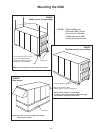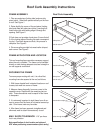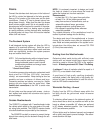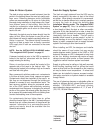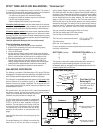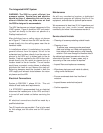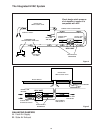
9
Fan Defrost
The Models 2500IFD and 2500EFD are equipped with
an electronically controlled fan defrost system to remove
frost that collects on the warm air side of the aluminum
heat transfer surfaces of the heat exchanger core.
When the outside temperature drops below 27˚F(-3˚C),
a defrost timer is activated which provides for an auto-
matic defrost cycle. During the automatic defrost cycle,
the fresh air supply is shut off while the exhaust fan
continues to operate. Both the times between defrost
cycles and the length of time spent in defrost are
adjustable (see pg. 9 for details). This allows warm
inside air to flow over the heat exchanger core, melting
any frost accumulation. After the defrost period, the
fresh air supply fan automatically returns to the normal
speed and fresh outside air continues to be drawn into
the building. Water from the melted frost collects in the
bottom drip pans and drains out through the bottom
drain connections. The defrost cycle repeats automati-
cally until the air temperature rises above 27°F (-3°C).
Location
The 2500EFD is designed to be mounted outdoors, usual-
ly fastened to a roof curb assembly. Special care and
attention should be given to positioning the cross mem-
bers of the roof curb, so that they line up exactly with the
duct openings on the HRV (see pg. 7). The 2500IFD
must be located in a heated space where the surrounding
air temperature does not fall below freezing point. The
exhaust air temperature must be above 60˚F (16˚C) for
proper defrost operation.
If the air temperature is too low the defrost time may
need to be increased. The unit must be mounted level
(horizontal) to obtain proper drainage of water from the
heat exchange cores and drip pans.The warranty will be
void if these conditions are not met.
Typically, the HRV is positioned close to an outside wall or
the roof to simplify the connections and keep the length of
insulated ducting to a minimum.
A minimum clearance of 40 in. (1 m) on one side of the
HRV is recommended to service the heat exchanger
cores and the filters.
Mounting
The 2500EFD is designed to be mounted on a roof curb.
When assembling the curb, note position of cross
members which provide duct support. Note access
through the roof will be required.
It is also important to ensure that the perimeter of the
curb is insulated, but the interior of the curb is not. This
allows heat from the building to prevent freezing of the
drain lines and pans.
The 2500IFD should be hung by a threaded rod
type assembly which provides a cradle for the unit
(see pg. 11). Note that 2X4's should sit under the unit to
avoid damage to the lip of the cabinet. The HRV may
also be mounted on an equipment platform provided that
the drain hoses are clear and there is sufficient space for
service access.
STALE AIR
TO OUTSIDE
FRESH AIR
FROM OUTSIDE
STALE AIR
FROM INSIDE
FRESH AIR
TO INSIDE
FILTERS
MOTORS
BLOWERCORE
BLOWERDRAIN PANS
P-TRAP



